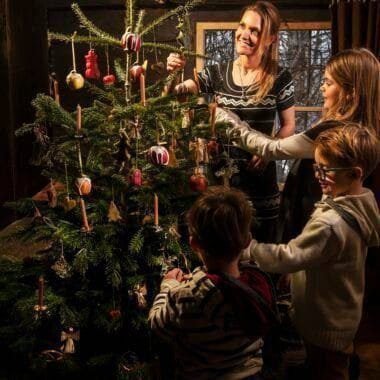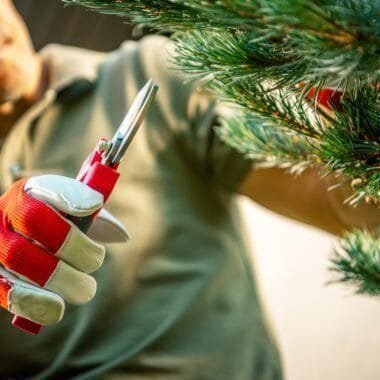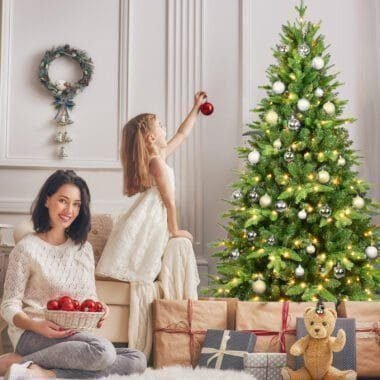Christmas is the most welcoming and festive time of the year, and the Christmas tree is undoubtedly the centrepiece of the festive decor. When it comes to choosing an ideal mock Christmas tree, there are many practical factors to consider beyond aesthetics to ensure that the tree not only blends perfectly into your home’s décor, but also lasts long enough to become part of the festive season. Here are some key elements to help you pick the ideal faux Christmas tree.
1. Consider space and size
The first step in choosing a faux Christmas tree is to assess your space. Whether you are placing a Christmas tree in your living room, bedroom or office, it is important to determine its height and width. The height of the tree generally ranges from 4 feet (about 1.2 metres) to 12 feet (about 3.6 metres), suitable for spaces with different ceiling heights. Typically, you will need to choose a tree that is 1 to 2 feet lower than the ceiling, leaving room for decorative tree topper ornaments.It’s also key to consider the width of the tree. If you have a small room, choosing a narrow or slim faux tree will save space while maintaining a festive atmosphere. For spacious rooms, you can choose wider and fuller Christmas trees to enhance the visual effect.
2. Branch type and material
The material of the simulation Christmas tree and the type of branches directly affect its appearance and texture. Most high-quality simulation trees are made of PE (polyethylene) or PVC (polyvinyl chloride) material. PE material is usually used for high-end simulation trees, and the leaves are made by moulds for a more natural and realistic look, while PVC material trees are a bit more traditional and usually more affordable.You should also pay attention to the design of the branches – whether they are hinged branches or hook-on branches that need to be assembled manually. The advantage of shaped branches is that they are easy to unfold and install, saving time, while hand-assembled branches are suitable for those looking for a more personalised arrangement.
3. Tree colours and styles
In addition to the classic green Christmas tree, there are many innovative colours and styles available on the market today. White trees, flocked trees and even silver or gold trees are all stylish choices to give your festive decorations a sense of individuality and uniqueness.If you prefer a more traditional style, the classic green tree remains a favourite, and paired with red and gold ornaments, it instantly creates a festive atmosphere. If you prefer a modern or minimalist style, a snow-white or silver Christmas tree will bring a refreshing visual sensation that fits perfectly with the minimalist décor.
4. Pre-lit or not
Many simulated Christmas trees come with pre-lit trees, which greatly simplifies set-up during the festive season. If you don’t want to buy and install separate lights for your tree each year, pre-lit trees are a great alternative. These trees usually come with warm white lights or coloured lights, which can be chosen according to personal preference.However, if you prefer to decorate your Christmas tree yourself, opting for a simulated tree without pre-installed lights is not a bad idea. This type of tree gives you more room for creativity, with the freedom to mix and match lights and other hangings to suit the year’s themed style.
5. Adjustability and Durability
The ideal mock Christmas tree should be easy to set up and take down. Choosing those trees with metal stands and durable materials will ensure its stability and longevity. The stand of the tree should be sturdy to ensure that the tree can stand firmly, especially after the tree is filled with decorations. Metal stands are usually more reliable and supportive than plastic stands.Additionally, a high-quality faux Christmas tree can last for years and become part of your family’s holiday traditions. Investing in a quality tree will cost a little more for the initial purchase, but the durability and long-term benefits are worth it.






